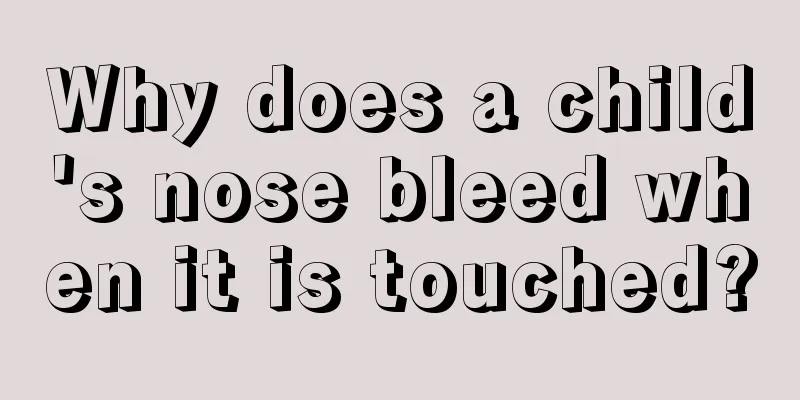Why does a child's nose bleed when it is touched?

|
Some children are born with weaker constitutions, which has a lot to do with their parents' genes and the care taken by the pregnant women during pregnancy. However, in modern society, most children are in very good health because they have adequate nutrition and advanced medical technology. In life, some children seem to have some physical problems, especially their noses bleed easily every time they are touched. What is going on? Children's noses are not fully developed to begin with, and it is often possible that they may have inflammation or that the capillaries in the nose may be damaged due to frequent nose picking. There are many reasons for nosebleeds, but about half of people cannot find the cause. The tiny blood vessels in the nasal mucosa are densely distributed, very sensitive and fragile, and can easily rupture and cause bleeding. Nosebleeds are common in preschool children. When a person has a nosebleed, most people are accustomed to tilting their head back with their nostrils pointing upwards, thinking that this can effectively stop the bleeding. This is actually wrong. Doing so will only prevent the blood from flowing out, but the blood will actually continue to flow - flowing inwards. The "leaning back posture" during nosebleed has the following disadvantages: 1. The blood that has already flowed out of the nasal cavity will flow backwards to the throat due to the posture and gravity, and it will not have a real hemostatic effect. 2. The blood in the throat will be swallowed into the esophagus and gastrointestinal tract, irritating the gastrointestinal mucosa and causing discomfort or vomiting. 3. When the amount of bleeding is large, it is easy for the blood to be inhaled into the trachea and lungs, blocking the respiratory airflow and causing danger. The correct way is to keep the head upright or slightly tilted forward to allow the blood to flow out of the nostrils to avoid staying in the nasal cavity and interfering with the breathing airflow. The most common location for nosebleeds in children (about 90% or more) is on the nasal septum mucosa about one or two centimeters inside the nostril. Because it is close to the anterior nostril, the most convenient local compression method can be used to stop the bleeding when the nose bleeds. The method is: 1. Adults should first try their best to calm themselves down and not panic, so as to comfort children who are frightened by bleeding. 2. The head should be kept in a normal upright or slightly forward posture. 3. Use your fingers to press the front part of the nose (the soft part of the nose) on the bleeding side from the outside of the nose, similar to pinching the nose with your hands, and apply direct pressure for about five to ten minutes. Most patients can simply stop bleeding in this way. The other nostril that was not bleeding could still breathe freely. 4. If the bleeding does not stop after more than ten minutes of compression, it may mean severe bleeding or other problems. At this time, you need to go to the doctor for further treatment. |
<<: Why does my baby have jelly-like diarrhea?
>>: Will drinking ginger tea stimulate the fetus?
Recommend
What should I do if my baby's heart is a little big?
Newborn babies are the darlings of every family. ...
How many months can babies wear clothes that are suitable for them?
My child was born in winter. At what months can t...
What causes children to have fever and diarrhea?
From birth to adulthood, most babies will face th...
Treatment for neck pain in children
For many children, the younger they are, the weak...
How to develop good behavior habits
Behavioral habits can affect a person's life ...
2 and a half year old baby still can't speak
Some babies cannot speak until they are two and a...
What to do if your 6-year-old child has a sore throat
The sore throat of a 6-year-old baby is mainly ca...
What causes baby's sweaty palms?
Today's babies are the sweethearts of the fam...
Do I still need to take folic acid after three months?
Folic acid is very important for pregnant women, ...
What to do if your baby has a fever and is drowsy
In our lives, if mothers find that their babies a...
How to treat asthma in children
Children with asthma must be treated in time, bec...
Will the red birthmark on a newborn baby go away?
Many parents will be particularly worried when th...
What causes swollen eyelids in children?
Whether a child has adequate nutrition can be sho...
What to do if a premature newborn baby fails the hearing screening?
Premature newborns have more serious hearing dama...
Why does a child foam at the mouth while sleeping?
Being a parent is the hardest job. While taking c...









